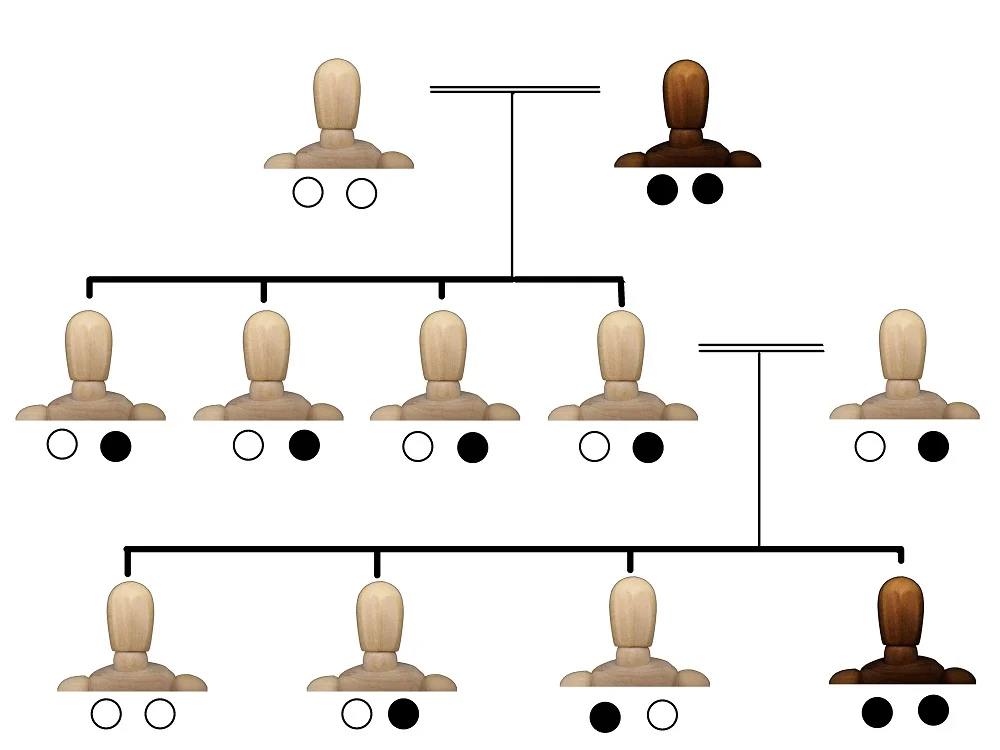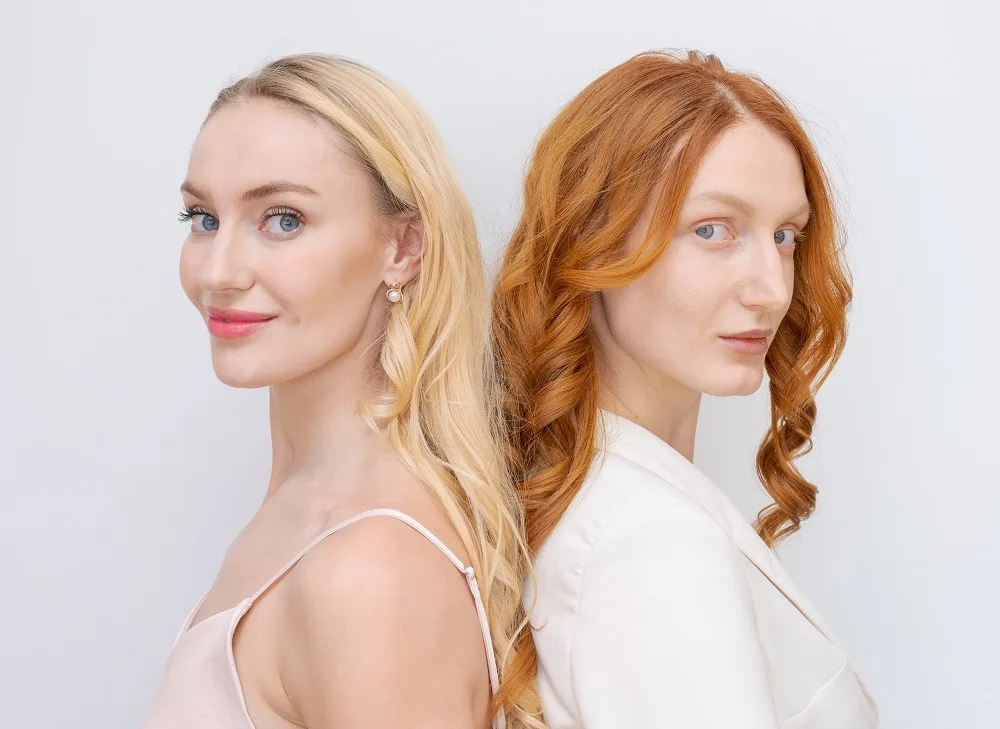We all learn the basics about dominant and recessive genetic traits in school. So it’s common to wonder: whether your hair color is dominant or recessive.
Your genetics determines your hair color, specifically the gene you inherit from your parents. For example, melanin is the pigment that gives you your hair color, and the type and amount of melanin activate other proteins to determine hair color.
With the question, is blonde hair dominant or recessive? Let’s take a deep dive into genetics and hair color to give you the answer.
What Are Recessive Traits?

Recessive traits are the traits that get passed down from each parent. The versions of each gene you get from your parents are called alleles.
Recessive traits can only be expressed when both recessive alleles of the trait-causing gene are present. It’s impossible to inherit a recessive trait if one allele is present.
In general terms, a recessive trait covers the presence of the dominant characteristics. Also, recessive genes are less intense than dominant traits.
What Are Dominant Traits?
Similar to recessive traits, you receive two versions of a gene from each of your parents.
However, unlike recessive traits, you only need one dominant trait to be present in the allele. Therefore, when there’s one dominant trait and one recessive trait, the dominant trait overshadows the recessive one.
If both parents carry a dominant trait, then you will inherit the dominant feature.
If one parent carries the dominant trait and one parent carries the recessive trait, then you will inherit the dominant feature as well.
In genetics, even if only one dominant trait is required, you can inherit a dominant trait from your parents.
Is Blonde Hair Recessive or Dominant?
Blonde hair is a recessive gene because genetics requires both parents to be carriers of the blonde gene in order to have a blonde child.
However, blonde hair can skip multiple generations because the dominant gene for darker hair could’ve been more present in the past. The overpowering dominant gene can be subsided if that same parent also carries the blonde hair gene somewhere in their ancestry.

If one parent has dark hair and the other parent has blonde hair, it’s less likely for the child to have blonde hair because the dominant gene overpowers the recessive blonde gene.
Also, the baby has a 50/50 chance of having blonde hair if one parent carries a recessive blonde trait somewhere in their genes.
While blonde hair is recessive, it’s impossible to predict hair color because color variations can happen throughout your parent’s genetics.
In addition, blonde hair contains the pigment eumelanin, which causes black or brown hair.
However, other genes you inherit from your parents reduce the amount of eumelanin produced, which leads to blonde hair.
Is Blonde Hair Recessive to Red?

No, blonde hair is dominant to red hair. It’s dominant because blonde hair has a small amount of eumelanin, which is the protein that determines hair color.
Red hair is completely different because it contains another pigment called pheomelanin. You get red hair from a specific mutation on the MC1R gene.
Also, the red hair pigment comes from a broken gene that cannot turn into the eumelanin pigment. As a result, it remains recessive to blonde hair because the parent needs to carry the mutation in order to have a child with red hair.
In addition, blonde hair and red hair are both recessive genes compared to brown and black hair.
FAQs
Learning about dominant and recessive traits can be overwhelming. So here are a few more questions and answers to help you understand more about blonde hair.
Yes, two dark-haired parents can have a blonde baby. It happens when there are blonde people in the parent’s ancestry. If both parents carry the blonde gene but are dark-haired, they can have a blonde baby.
However, many people have hair that changes from childhood to adulthood. So, for example, if one parent had lighter hair as a baby, it would not go down to the child because both parents need the recessive gene.
Yes, brown hair is dominant over blonde hair because if only one parent has brown hair, their child is going to have brown hair.
The type of melanin that gives people hair color is eumelanin. For example, people with blonde hair have a very small amount of eumelanin.
Also, Melanocortin 1 Receptor (MC1R) is the gene that’s responsible for determining hair color. The MC1R gene contributes to the amount of eumelanin that a person may have.
So, Is Blonde Hair a Recessive or a Dominant Gene?
When it comes to determining if blonde hair is dominant or recessive, it correlates to your genetics that gets passed down from both of your parents.
Blonde hair is a recessive gene because both parents need to carry the gene for their child to inherit blonde hair. If only one parent carries the gene, the child is more likely to have a different hair color.
It’s important to remember that every person is unique in their own way, and their hair color only adds to the uniqueness.
